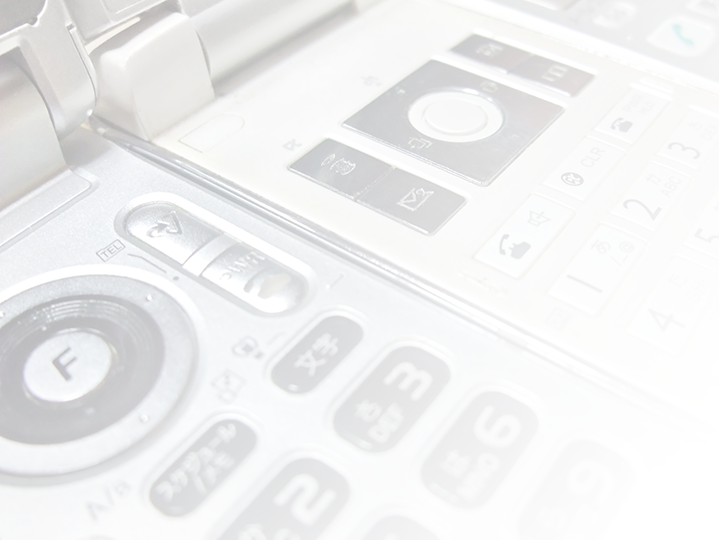Growth accompanied by changes in business conditions
Alongside the evolution of mobile networks
Continuously providing new technological services
Phase 11996~2003
Company founded in August 1996
In 1996, before the appearance of the second generation (2G) of mobile network technology, our founder Toshihiro Maeta predicted the growing potential of mobile content and founded the company in 1996 with the aim of providing various entertainment, life information, and solution services that society needs.
Subsequently, we developed a diverse spot-type business for internet-related services, including cell phone sales, content distribution, and managing online payment systems and website systems.
Then in 1999, when 2G appeared, i-mode* was launched.This led to rapid growth of the mobile content market and MTI also created new websites and content services, such as weather information and music information, one after the other.
As performance was favorable and we were able to stay in the black, we registered as over-the-counter securities with the Japan Securities Dealers Association in October 1999.In the following year of 2000, we started the female healthcare service that later became Luna-Luna.
- * The i-mode logo is a trademark and registered trademark of NTT DOCOMO, INC.

Phase 22004~2006
Content services as our core business
We partly revised our scattered business resources and focused on our stock-type businesses, such as internet-related services for content distribution and health insurance sales through telemarketing.Although we were mainly a content provider, we also strengthened our business capacity by developing our insurance business.
Moreover, in December 2004, we were listed on the JASDAQ Securities Exchange.

Phase 32007~2010
Focusing on our content business, expanding our feature phone content business
In 2007, we developed our content distribution business and our original media advertisement business.Mobile network technology moved to 3G, data transfer speeds increased, and more convenient and comfortable contents services appeared.With “music.jp”, we were able to offer end users high-quality music information so that they can enjoy music anywhere, anytime, with the appearance of ringtones as well as Chakuuta* and Chakuuta Full*.
In September 2010, we successfully expanded our weather information service website to more than 1 million paying subscribers and kept growing from there.
Moreover, the iPhone was launched in Japan in 2007.We kept developing content services for feature phone on the one hand, but also commenced technological development for making apps and payment systems so that we could start content services for smartphones, where we saw high future growth potential.
Meanwhile, in November 2010, Jibe Mobile Inc. (trademark later changed to Automagi Inc., currently developing AI business), who work on mobile service-related technologies, became one of our subsidiaries following a capital increase through third-party allocation.
- * Chakuuta and Chakuuta Full are trademarks and registereds trademark of Sony Music Entertainment (Japan) Inc.

Phase 42011~2015
Successful shift to smartphone content business, change to listing on the First Section of the Tokyo Stock Exchange
Our content services for feature phones (cell phones) had expanded to 9.73 million users by March 2011, which was our peak as a feature phone content provider.
In 2012, mobile network technology sped up further and we moved to 4G.The smartphones caused all kinds of innovations and the big players in the mobile industry also changed.
We successfully expanded the number of new subscriptions for our paid smartphone content and increased the number of paying subscribers because we were able to introduce mopita, our original smartphone payment system that we had been developing since several years prior, and because were utilizing our sales promotion network via cell phone shops.
We also successfully developed our real shop affiliate business, which sold content from other companies in addition to our content through our content sales promotion network via cell phone shops across Japan.As a result, we achieved record performance in net sales in the FY ended September 2015 and in operating income in FY ended September 2016.
In March 2015, we changed to being listed on the First Section of the Tokyo Stock Exchange.
Further, we made Video Market Corporation into an equity method affiliate (later subsidiary) in May 2013 to strengthen our content business, while also implementing M&A in the medical and healthcare area with the aim of making our healthcare business our next main business.

Phase 52016~Current
Focusing on our healthcare business, promoting DX in healthcare, municipalities, and companies by drawing on our strengths in UI/UX
Starting in 2016, we started focusing on our healthcare business, which has great future growth potential, by drawing on our strengths in UI/UX and marketing that we had cultivated over many years in our content business.
Aiming to provide services for long-term support of customers in medical institutions (hospitals, dispensaries, clinics), health insurance association, municipalities, and elsewhere, we further strengthened this business through M&A and deeper collaboration with Medipal Holdings Corporation.
Meanwhile, in the content business, we reached 6.08 million paying subscribers for our smartphone content by the end of March 2016, but this number has been generally in decline after the Ministry of Internal Affairs and Communications introduced a policy of abolishing 0-yen devices in February of the same year.Because of this, we are strengthening our apps relating to original comics and security, for which there is growing demand.
The MTI Group is developing a range of businesses, including our healthcare business but also AI and fintech business and corporate DX promotion.
We are working toward sustainable growth by quickly providing new technological services in areas where technology is lacking.

